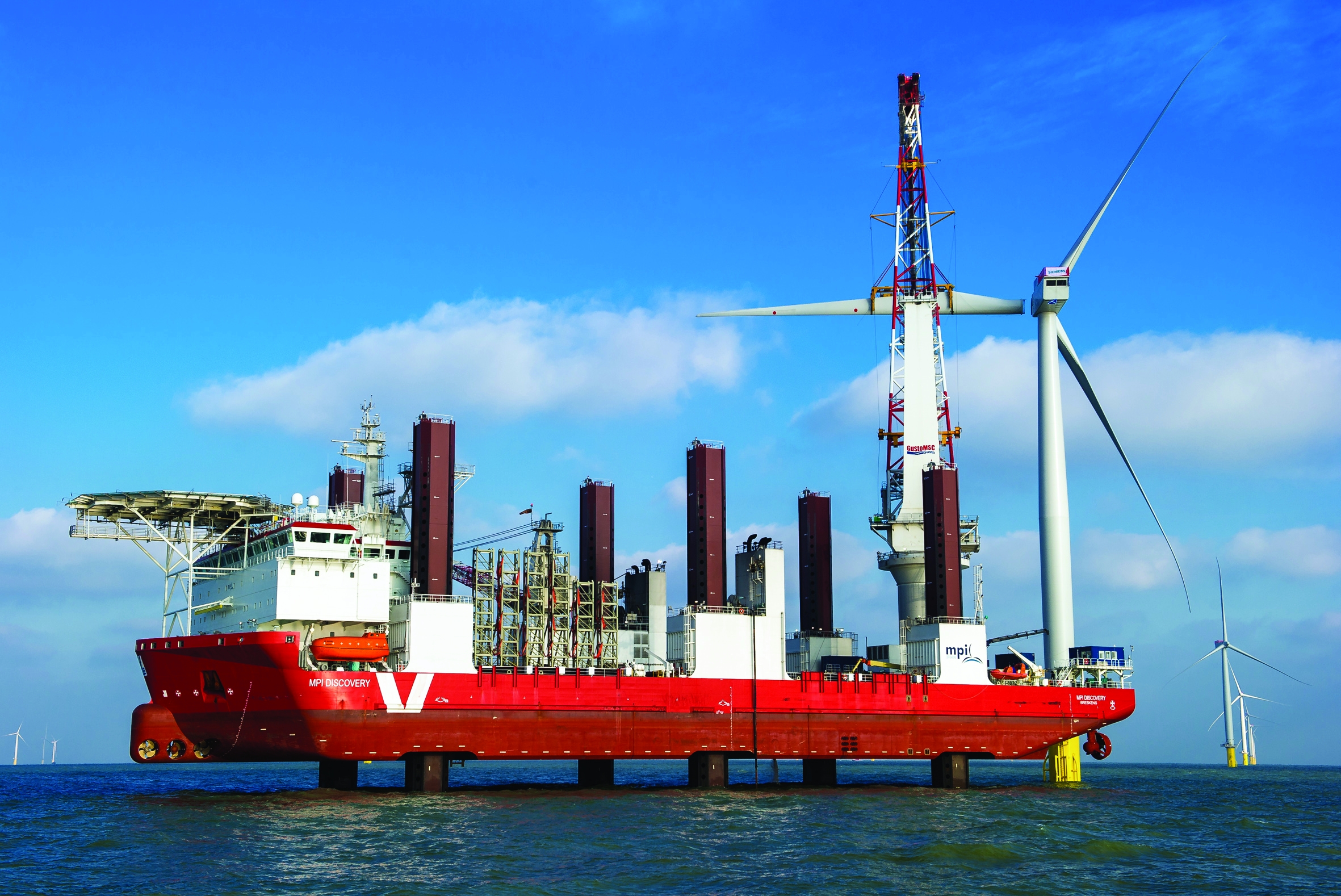The fair winds and strong currents that have borne the UK offshore renewable energy sector along in recent years have become a little conflicted of late. Growing uncertainty arising from the long-awaited Energy Bill has interrupted growth, and a persistent shortage of engineering skills still threatens to hamper future progress.
The industry remains confident of its potential; 2012 was a record breaking year. The last of 175 turbines in the world’s largest operational offshore wind farm, the London Array, came online last month (April). Other large-scale developments are also coming to fruition in UK waters, such as Teesside, Gwynt y Mor off the coast of North Wales and Gunfleet Sands off the Essex coast, where the next generation of more powerful offshore turbines is being tested for the first time anywhere in the world. Government figures showed in March that 11.3 per cent of the nation’s electricity came from renewable sources in 2012, an increase of two per cent on the previous year.

The largest absolute increase in electricity generation from renewables came from offshore wind, which increased by 46 per cent in 2012 compared to the year before. A record 1.2GW of new onshore and offshore wind was installed last year in the UK. ‘But we have the potential to do much more,’ said Jennifer Webber, director of external affairs at industry body RenewableUK. ‘This is a crucial year for the entire energy sector, as the Energy Bill is going through Parliament.’
There is a concern that the Bill, intended to unlock a further £110bn of private investment in renewables, will drive many independent generators out of the market. The sticking point is the proposed new system of long-term supply agreements between the generators and the utility companies. Under the scheme, generators claim they would not be offered viable terms, and without a bankable agreement to buy their power, its impossible to raise the finance for their projects.
Herts-based RES Group, which operates onshore wind farms around the world and is a consultant to some of the big utilities on offshore wind projects, said a lack of commitment to the long term future of offshore renewables in the UK was already beginning to bite. HR director Gary Robinson said that while the industry was handling a healthy flow of onshore projects, progress in the much less mature offshore market had “slowed to a crawl”. He said that if the previous trend of rapid recruitment was to continue, and the long term commitment secured, the company would have seen an increase in recruitment of up to 30 per cent. ‘We certainly won’t be seeing that,’ he said. ‘What we want is a proper long term committed strategy to offshore power generation.’
Last month energy secretary Ed Davey agreed to reconsider the new “contracts for difference” contained in the Bill, and the industry hopes that if the right framework for investment can be established the sector will continue to expand. But this will in turn require a smart response from the industry to secure and train the people it needs.
Research by RenewablesUK predicts that the wind and marine energy sector’s employment needs will be 88,000 full-time posts by 2021 if the medium energy generation projections are met. ‘The rapid growth of the sector means we are already facing skills shortages throughout the supply chain which is based on a broad range of activities,’ said Patricia Knightley, head of the Renewables Training Network (RTN), which was set up to coordinate and provide training for people wanting to get into the industry.

‘The RTN was set up to act as the bridge for the projected skills gap envisaged in technical, engineering and business roles and to develop and facilitate training courses that meet the transitional skilled entrant path into renewables.’ So far the RTN has offered over 100 training places since the autumn of last year.
According to figures from the Renewable Energy Association the sector as a whole employs 110,000 in the UK and is worth £12.5bn per year to the economy. Adrian Adair, operations director at the engineering recruitment specialist Morson International, said if the industry was allowed to grow, finding enough engineers to support it would be a significant challenge.
‘By 2020, it is reported, job opportunities could increase to around 400,000. The skills shortage is widely reported across the engineering industry, and the offshore renewable sector is no exception. If the above figures become a reality, then we face a significant challenge in this sector to attract, upskill and fill these roles.
‘Skills that are in highest demand at the moment include process, electrical and mechanical engineers, especially at senior and chartered level. Many of these skills can be found in other sectors such as oil and gas, marine or general energy engineering in this sector. Accessing these skills will be vital to the success of the offshore industry, even though sectors across the engineering industry are experiencing a significant shortage.’
The scale and risk associated with offshore projects lead those businesses who want a slice of the pie, including the big six utilities, to form consortia, thus creating large internal pools of engineering skills which can be drawn upon.
However, according to William Godfrey, a senior consultant at the specialist recruitment agency Austin Fraser, there is a strong flow of engineers from other areas into offshore renewables. He said businesses were always on the look out for engineers with transferrable skills, particularly on the research and development side.
Research and development is still the main focus in the much less established wave and tidal sector. Neil Kermode, managing director of the European Marine Energy Centre, said that while the Energy Bill was responsible for a “good deal of nervousness” in the industry, there was no slowdown in the rate of wave and tidal research projects using their open sea test facilities in Orkney.
As with wind power, he said, much of this was now being driven by the larger players who see the potential. ‘There is now a significant amount of realism among the big industrial majors, who have decided to get involved in this space. Alstom, ABB, DCNS and Kawasaki are all involved in projects with us. These kinds of businesses can bring greater firepower to bear on solving the technological challenges and they also bring a maturity, that is good, durable engineering.’
However, Kermode also forecast that the skills shortage would bite as these new technologies moved from testbed to full-scale installation. There would be a particular need for electrical design and grid engineers. ‘I have absolutely no doubt that there is going to be a shortage. There is such an epic amount of work to do in reconfiguring the UK grid for offshore power generation, getting those connections to offshore locations.’
Among the new technologies being tested at EMEC is a 1MW underwater turbine, which has been developed as part of a joint venture between Scottish Power Renewables (SPR) and Andritz Hydro Hammerfest. SPR plan to use 10 of the turbines in the world’s first tidal turbine array, which will be installed in the Sound of Islay. The turbine was put into the water at EMEC at the end of 2011, and now, said Michael Betschart, the chief engineer on the project, his team is in the process of finalising the design of the
commercial product.
He said the project had required a very broad set of engineering skills, including electrical, mechanical, application engineers, turbine design engineers, control and instrumentation engineers. However, these skills were generally difficult to attract.
‘These engineers are available, but I think it is the perceived job security that is the problem. Tidal is not an established business yet, and I think they would rather move to jobs in established industries.’




April 1886: the Brunkebergs tunnel
First ever example of a ground source heat pump?